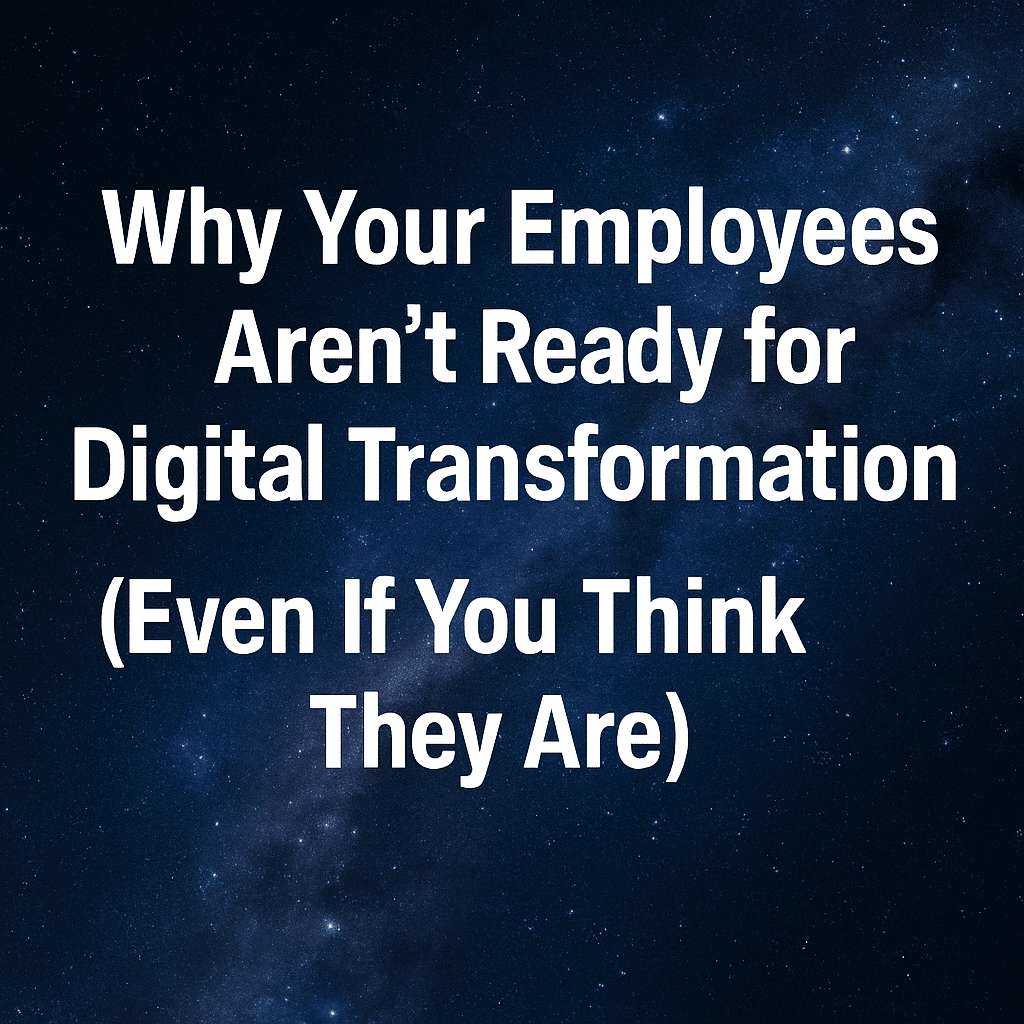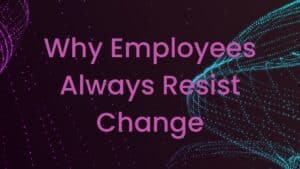Digital transformation promises growth, efficiency, and competitive advantage — but for most organizations, the biggest challenge isn’t technology. It’s people.
If you think your team is fully ready for a transformation initiative, you’re probably wrong.
In this article, we’ll explore four silent warning signs that your employees may be resisting change — not out of malice, but due to fear, confusion, and fatigue. And we’ll show you how organizational change management can help you course-correct before it’s too late.
Table of Contents
ToggleTable of Contents
- The Disconnect Between Leadership and Reality
- 1. Chaos and Confusion Undermine Engagement
- 2. Fear of Lost Value Drives Quiet Resistance
- 3. Change Fatigue Erodes Long-Term Support
- 4. Fear, Doubt, and Misunderstood Resistance
- How to Assess Employee Readiness for Change
- Next Steps: Build a Human-Centered Change Strategy
The Disconnect Between Leadership and Reality
Digital transformation often begins with strong leadership intent. The executive team believes in the value of new technology and assumes that their workforce is equally enthusiastic.
But perception is not reality.
Employees may appear “on board” during kickoff meetings or system demos. They might even express excitement. But beneath the surface, uncertainty is growing — and if left unaddressed, it can derail your entire initiative.
1. Chaos and Confusion Undermine Engagement
Even with a clear roadmap and capable technology partners, employees often experience:
- Lack of clarity around future-state processes
- Uncertainty about how their individual roles will change
- Disruption in team workflows and responsibilities
This organizational confusion can create internal friction and slow adoption. In most cases, this resistance isn’t hostile — it’s unintentional.
Why It Matters:
If employees don’t understand the “why” or the “how,” their natural instinct is to protect themselves. That often means reverting to old processes, delaying feedback, or disengaging entirely.
How to Address It:
- Create role-specific process diagrams and FAQs
- Offer two-way communication channels for ongoing feedback
- Develop pre-go-live simulations to walk employees through future workflows
2. Fear of Lost Value Drives Quiet Resistance
One of the most overlooked barriers to transformation is employee fear of becoming obsolete. Automation might streamline your business, but employees may interpret it as a threat:
“If the system does 60% of my job, what happens to me?”
This is especially true for high performers — those who’ve used sheer willpower to power through legacy systems and broken processes. When those systems are replaced, their perceived value may feel diminished.
What You Can Do:
- Reinforce how their existing knowledge enhances the new system
- Shift the conversation from job elimination to job evolution
- Recognize and celebrate contributions that made success possible pre-transformation
3. Change Fatigue Erodes Long-Term Support
Whether your organization has recently gone through a merger, downsizing, or leadership change, your employees are already carrying change-related stress. Add a multi-year transformation project on top, and burnout is inevitable.
Even if the change is positive, constant transformation without pause creates mental exhaustion.
Warning Signs of Change Fatigue:
- Missed deadlines and skipped meetings
- Passive compliance without enthusiasm
- Increased turnover or disengagement
Solutions:
- Build in milestone celebrations and internal recognition
- Allow for pause points between phases of rollout
- Keep consistent leadership messaging to maintain trust
4. Fear, Doubt, and Misunderstood Resistance
Most employee resistance is rooted in three things:
- Fear of the unknown
- Doubt in leadership or systems
- Lack of confidence in their ability to adapt
Too often, leaders interpret these reactions as defiance. But they’re really symptoms of an incomplete change strategy.
Best Practices:
- Host small group listening sessions
- Normalize conversations about doubt and stress
- Create change champions within each department to model buy-in
How to Assess Employee Readiness for Change
The key to mitigating resistance is to stop guessing — and start measuring.
At Third Stage Consulting, we use a structured Employee Readiness Assessment that combines:
✅ Quantitative Tools
- Digital surveys
- Change impact heat maps
- Risk scoring by department or function
✅ Qualitative Interviews
- One-on-one conversations
- Focus groups
- Cultural diagnostics
This holistic approach helps identify hot spots of resistance, predict adoption risk, and tailor change strategies to specific departments and employee types.
Next Steps: Build a Human-Centered Change Strategy for Digital Transformation
The most successful digital transformations are built on clarity, empathy, and communication. Organizational change management is not a “nice to have” — it’s the backbone of your transformation strategy.
Your Action Plan:
- Download our free Organizational Change Management Guide
- Conduct a readiness assessment before major project milestones
- Align change strategy with employee feedback and cultural insights
📥 Download the Guide to Organizational Change Management
📞 Or reach out for a free consultation to discuss your specific transformation goals.
About the Author
Eric Kimberling is the CEO of Third Stage Consulting Group and a global expert in digital transformation and ERP strategy. With over two decades of experience advising Fortune 500 and mid-market organizations, Eric specializes in helping companies align their people, processes, and technology to drive meaningful change.

digital transformation





